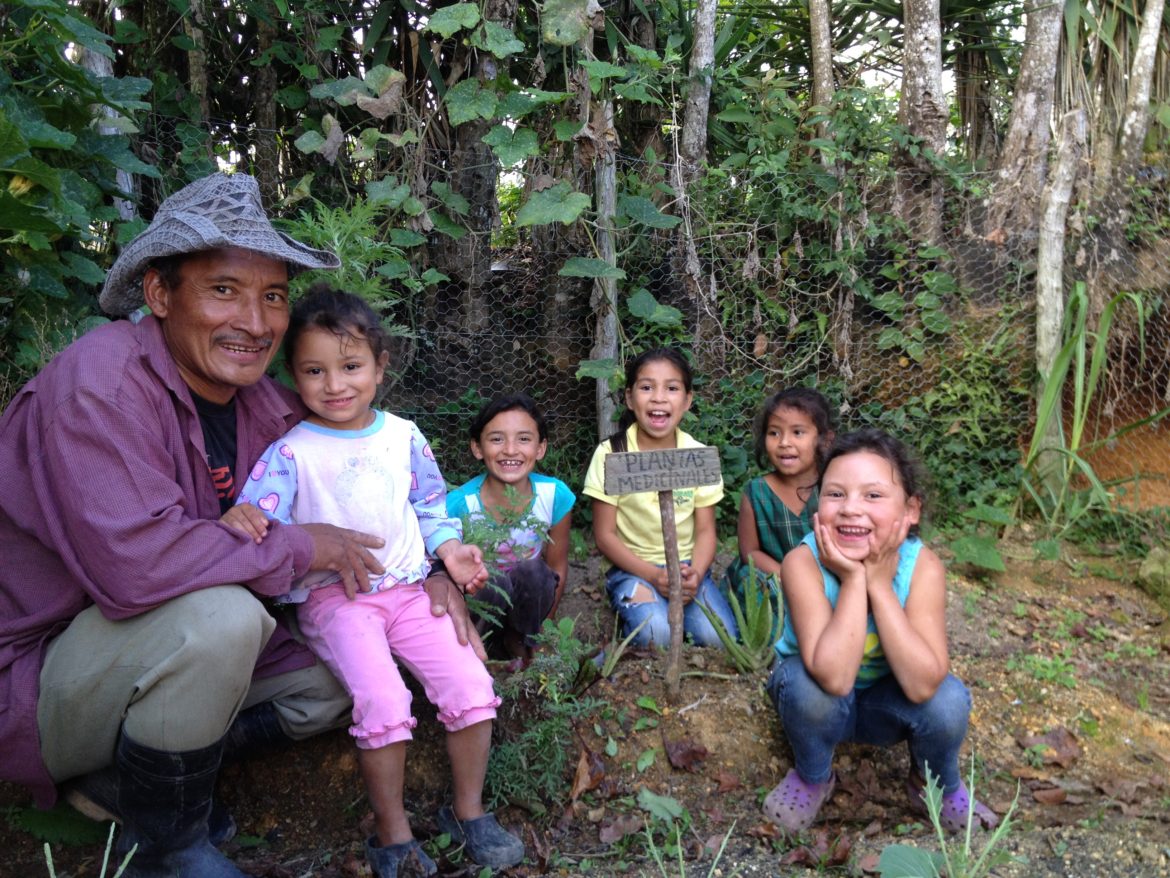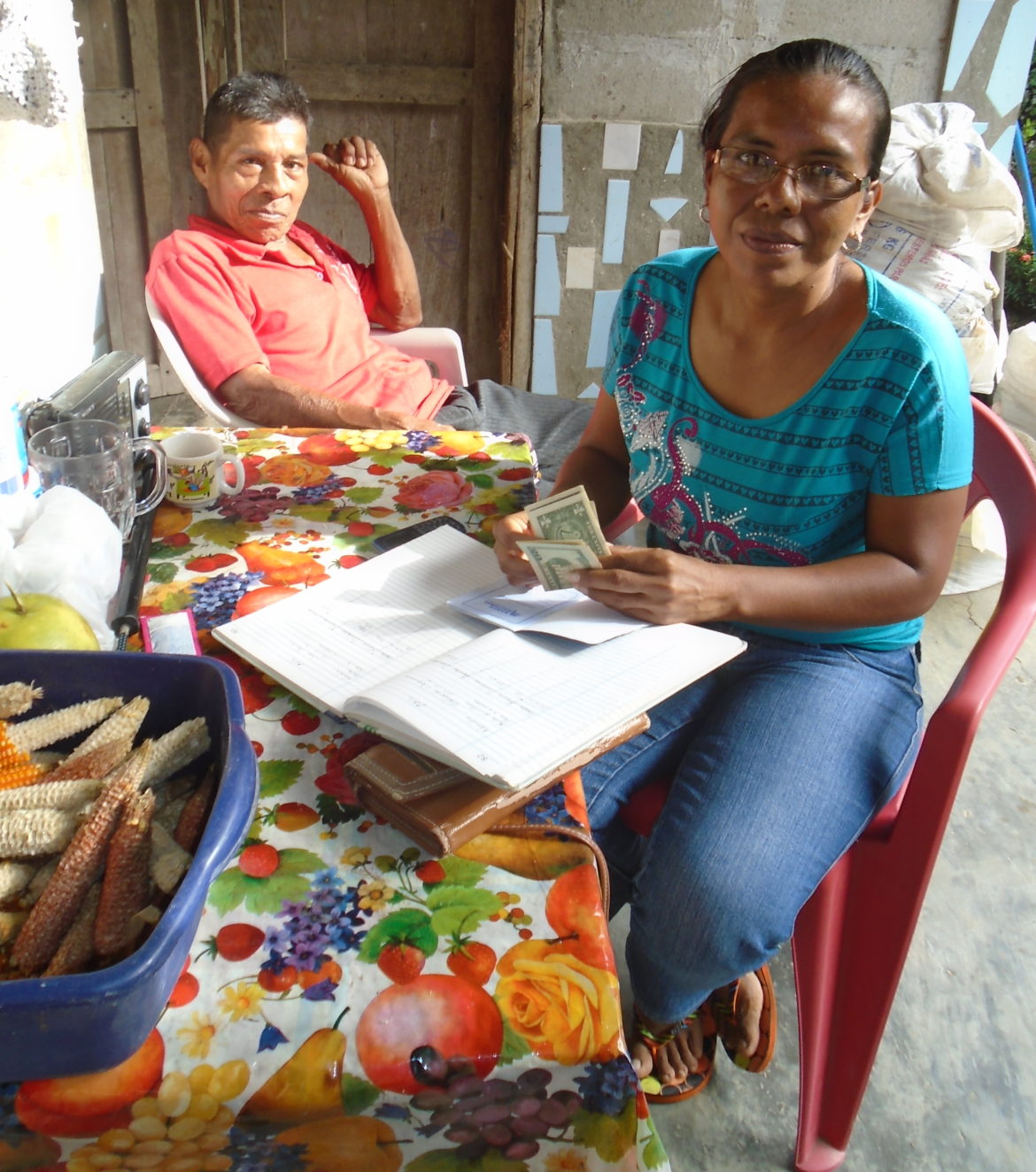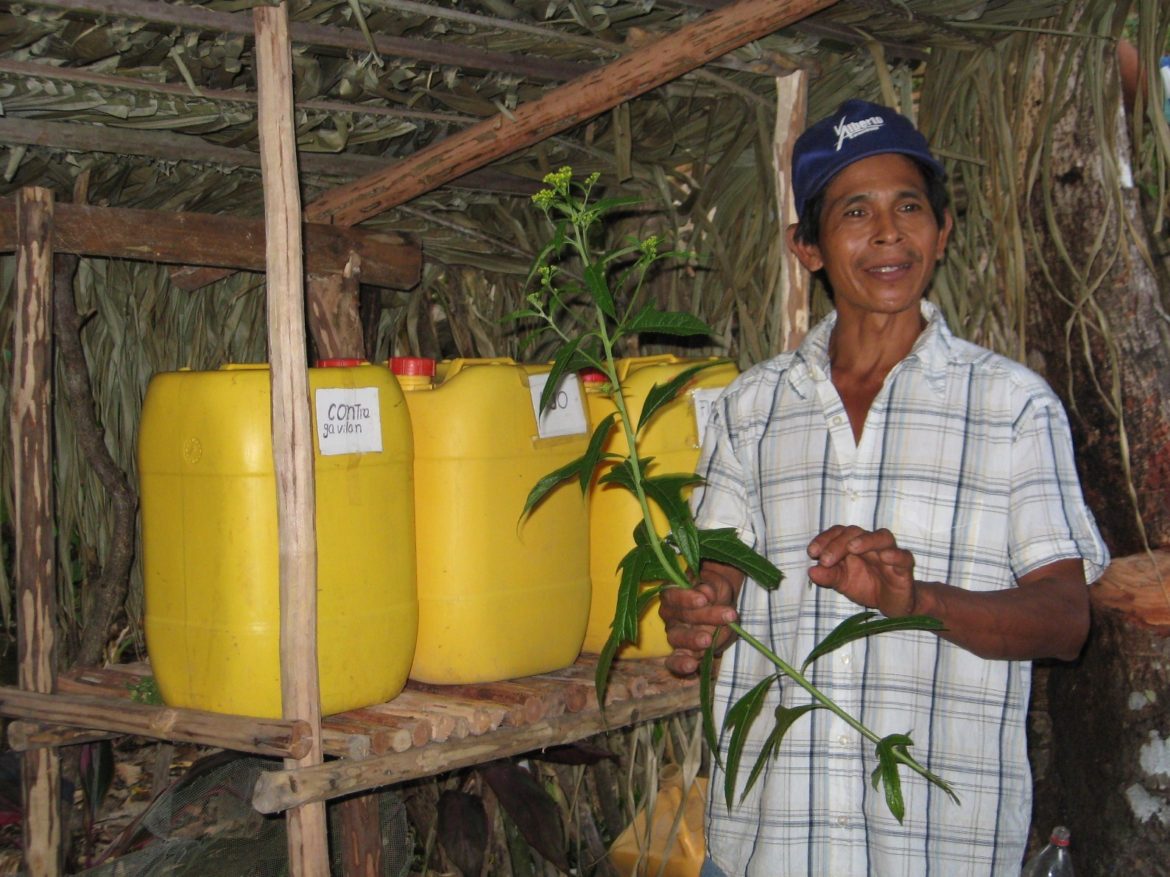The world’s small-scale farmers are key to safeguarding our most vulnerable ecosystems, and to leading the global transition to regenerative agriculture.
Sustainable Harvest International, a partner of Regeneration International (RI), is on the frontlines in Central America training small-scale farmers in regenerative agriculture and land management. Sustainable Harvest International’s holistic training model empowers small farmers by providing, over a period of several years, the knowledge and resources they need to successfully transition regenerative agriculture and develop markets for their products. Training areas include growing, processing and marketing.
Sustainable Harvest International’s work is in contrast with international agricultural development where small farmers are often provided genetically modified seeds and chemical fertilizers as a way to boost production and adapt to climate change. As they have seen first hand, chemicals harm farmers and the environment, and create dependence on expensive external inputs.
RI interviewed Sustainable Harvest International founder Florence Reed to learn more about the organization’s work and the obstacles they face.
—————————
Regeneration International (RI): Tell us about Sustainable Harvest International’s work.
Florence Reed (FR): Sustainable Harvest International’s mission is to preserve the environment by partnering with families to improve their health and well-being through regenerative farming.
Since 1997, Sustainable Harvest International has provided individuals, families and schools in Central America with the education, training and materials they need to create regenerative farms. As a result, natural forestland has been saved from slash-and-burn farming, and families have been able to remain together on their land growing organic produce to feed themselves and take to market.
RI: Where does SHI work and how were these areas selected?
FR: We currently work in Panama, Honduras and Belize. We also worked for many years in Nicaragua. Those countries all meet Sustainable Harvest International’s primary criteria of having large numbers of low-income families in rural areas, and high rates of tropical deforestation. Beyond that, it was honestly circumstantial. I just happened to be working in these countries immediately prior to founding Sustainable Harvest International. Going forward we have clearly delineated criteria in a matrix to help determine where we will work in the future when additional funding allows us to expand again.

Clemente Mejía and his family pose in their organic garden in Monte de Dios, Honduras. Families who partner with Sustainable Harvest International diversify their crops, improve their nutrition, increase their income, and preserve the environment. Photo by Victor Arboleda.
RI: Why did you choose regenerative agriculture as the avenue to combat rural poverty in Central America?
FR: I am first and foremost an environmentalist, because without a healthy environment that will sustain human life, nothing else matters. I founded Sustainable Harvest International as a missing but necessary way to stop tropical deforestation. We built the organization on the premise that environmental degradation and rural poverty are unavoidably linked, so the solution must also be linked.
With 3.1 billion people in the developing world living in poverty, and 70 percent of the people who go hungry living in rural areas where land is available for farming, it only made sense to help those populations grow the food to feed themselves, rather than leave them to rely on money that comes and goes so easily in these communities.
At first, I was partial to ecological farming practices because I figured nature knew how to sustain itself. But I was originally open to any alternative to slash-and-burn farming, including chemicals, if there wasn’t a natural solution. At the time, I didn’t understand the damage that chemical fertilizers do to soils. I didn’t realize that the harm caused by pesticides is as serious as the damage caused by slash-and-burn farming. Over time, I learned a lot from colleagues, board members and others and came to the conclusion that any agriculture that degrades soils, pollutes water, decreases biodiversity and puts more carbon into the atmosphere is a threat to life as we know it. So I concluded that, if the human race wants to keep feeding ourselves, we must move to regenerative agriculture that builds up and maintains healthy ecosystems on and below the ground, while storing as much carbon as possible in the soil. Sustainable Harvest International has been around long enough now that we can always find a natural alternative to the regular use of agrochemicals or other harmful practices.
RI: How many farmers do you work with?
FR: Over the past 19 years, we’ve partnered with just over 2,800 farmers and their families. We’ve taught them how to farm sustainably, how to build wood-conserving stoves and solar driers, how to set up chicken coops and fish ponds, and how to establish micro businesses to bring organic farm products to market.
RI: Are you able to measure the impact of your work on the lands being worked by these farmers?
FR: Absolutely. Our model provides low-income farmers with alternatives to slash-and-burn agriculture, so they can build strong, self-supporting communities, and sustain the land for future generations of farmers.
Our locally hired field trainers teach farmers how to build erosion-control barriers from rocks, living trees, pineapples or other natural materials. They also teach farmers how to use cover crops, mulch and compost to improve soil health, and to make their crops more pest- and disease-resistant. To prevent mineral depletion, we teach farmers about crop rotation. We also educate them about integrated pest management techniques, including the production of natural pesticides made from local plants and inexpensive household products.
Over the years, with our help, farmers have converted over 17,700 acres of degraded land to sustainable farms, and restored 15,000 acres of devastated forest land by planting over four million trees.

As treasurer of the rural bank Sustainable Harvest International helped found in Los Alonsos, Panama, Nancy Alonso (right) connects community members to micro-loans for income-generating projects. Photo by Dayra Julio.
RI: What are some of the biggest obstacles that small-scale farmers face when transitioning to or starting regenerative agriculture production?
FR: For farmers not in our program, I would say the biggest obstacle is lack of regular technical assistance over the course of several years. Regenerative agriculture requires a multi-faceted approach combining many skills and practices. It is not nearly as simple as burning a field or throwing down some chemicals. It also takes more time and physical labor to build up the healthy soils and ecosystems that are the basis of regenerative agriculture. Once the initial work is done, however, the farmers generally find that maintaining their regenerative farms is less work and less costly than other methods of farming.
RI: What challenges does Sustainable Harvest International face when training families in regenerative production?
FR: Among small-holder farmers in the global south, there is a huge demand for the type of training Sustainable Harvest International offers. Farmers are ready, willing and able to make the transition with our assistance. But communicating across four countries and cultures is challenging. So is setting up organizational structures that make the work as effective and efficient as possible, and finding the funding to meet even a fraction of the demand for this service that is so critical to people and the planet.
RI: Your organization is on the front lines training small-scale farmers in regenerative agriculture. We talk about how small-scale farmers will lead the global transition to regenerative agriculture. How do you see the work SHI is doing being rolled out on a global scale?
FR: Members of our board and staff, together with some expert advisors, have just begun to seriously look at this question in recent months. I expect we will have a solid initial plan for tackling this question soon, and that it will be based in great part on finding larger organizations, businesses and government agencies whom we could train to adopt our methodology, as well as big funders and intergovernmental agencies who could help facilitate this paradigm shift.
Ultimately, to be sustainable, I think this transition needs to be taken on by governments and businesses that have the staying power and steady income, not dependent on charity. For now, however, I think Sustainable Harvest International and organizations like ours need to be the levers to get this ball rolling before it’s too late.

Isabel Rodriguez of Bella Florida, Panama demonstrates how to make organic pesticides and fertilizers from locally acquired ingredients. Photo by Florence Reed.
RI: What does the regenerative agriculture movement need to expand on a global scale?
FR: It needs more resources, which means big funders like USAID and Gates Foundation shifting funding from support of chemical-dependent monoculture systems for growing commodity crops for the export market, to programs that let farmers transition to regenerative farming to grow food for themselves, as well as to sell to local and regional markets.
To learn more about Sustainable Harvest International and how you can support their work, visit their website www.sustainableharvest.org.
Contact:
Florence Reed
Founder and President
Sustainable Harvest International
https://www.sustainableharvest.org/



